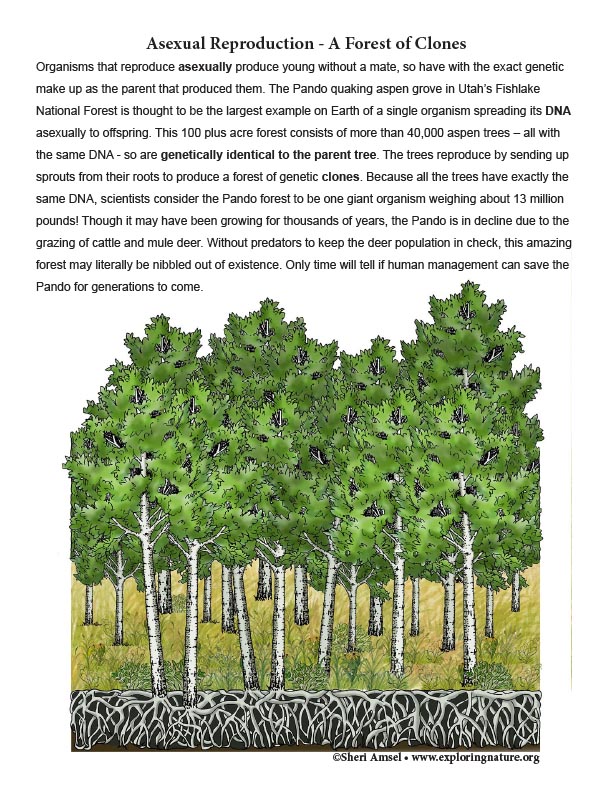

Organisms that reproduce asexually produce young without a mate, so have with the exact genetic make up as the parent that produced them. The Pando quaking aspen grove in Utah’s Fishlake National Forest is thought to be the largest example on Earth of a single organism spreading its DNA asexually to offspring.
This 100 plus acre forest consists of more than 40,000 aspen trees – all with the same DNA - so are genetically identical to the parent tree. The trees reproduce by sending up sprouts from their roots to produce a forest of genetic clones. Because all the trees have exactly the same DNA, scientists consider the Pando forest to be one giant organism weighing about 13 million pounds!
Though it may have been growing for thousands of years, the Pando is in decline due to the grazing of cattle and mule deer. Without predators to keep the deer population in check, this amazing forest may literally be nibbled out of existence. Only time will tell if human management can save the Pando for generations to come.
When you research information you must cite the reference. Citing for websites is different from citing from books, magazines and periodicals. The style of citing shown here is from the MLA Style Citations (Modern Language Association).
When citing a WEBSITE the general format is as follows.
Author Last Name, First Name(s). "Title: Subtitle of Part of Web Page, if appropriate." Title: Subtitle: Section of Page if appropriate. Sponsoring/Publishing Agency, If Given. Additional significant descriptive information. Date of Electronic Publication or other Date, such as Last Updated. Day Month Year of access < URL >.
Amsel, Sheri. "Asexual Reproduction - A Forest of Clones" Exploring Nature Educational Resource ©2005-2024. December 13, 2024
< http://www.exploringnature.org/db/view/Asexual-Reproduction-A-Forest-of-Clones >
